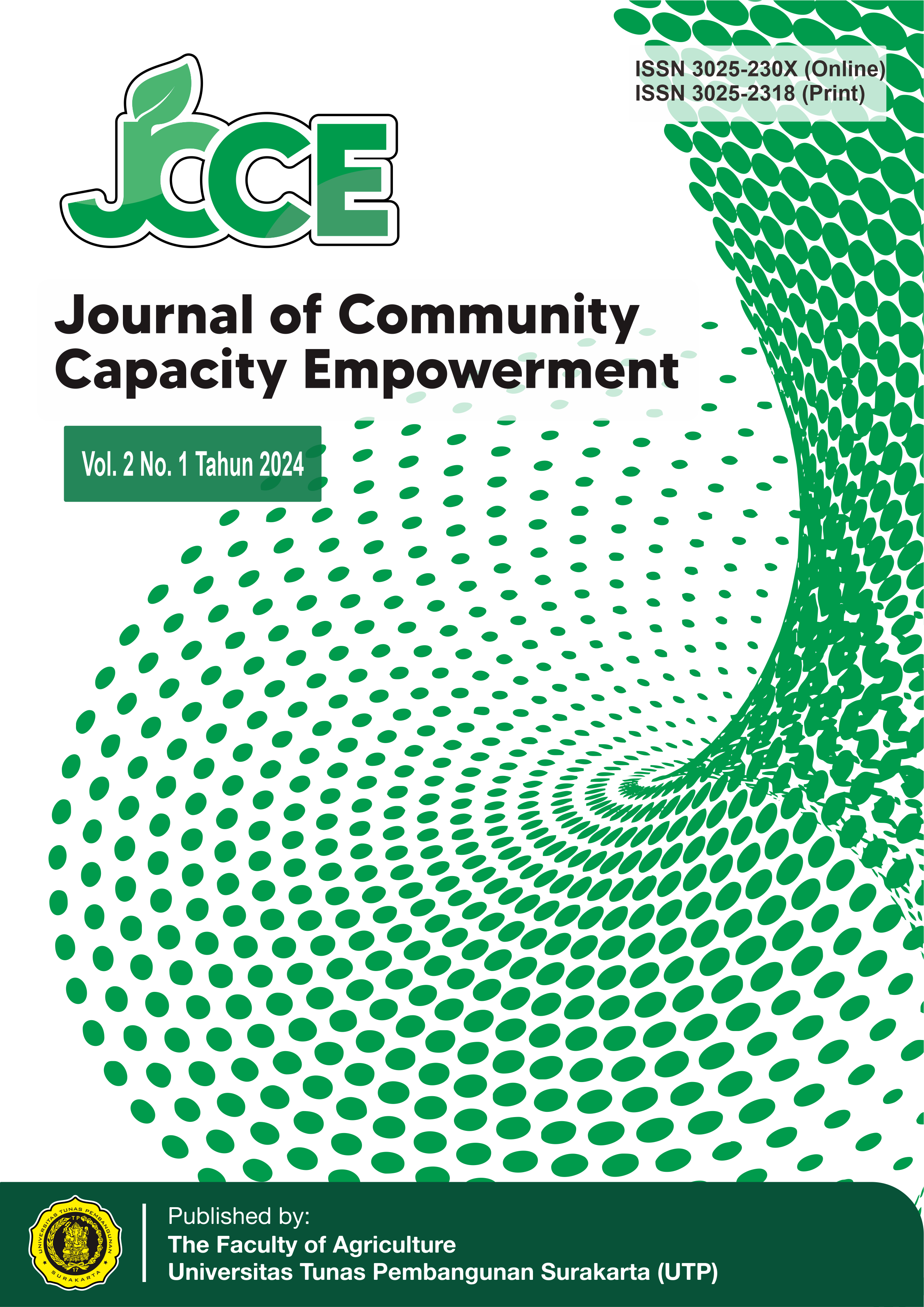Physical Fitness Study Screening of Physical Education Students for Enhancing Physical Capabilities at Tunas Pembangunan University Surakarta
Abstract
Physical fitness is one of the important physical components and must be owned by students of Tunas Pembangunan University to support lecture activities related to physical activity. The purpose of this study was to determine the physical fitness of students of Tunas Pembangunan University Surakarta. This research uses quantitative descriptive research methods, is research that has the intention of getting an overview of a situation that exists in the present and ongoing and centered on actual problems. Data collection using MFT (Multistage Fitness Test) running test. The population of this study uses all students of the UTP Physical Education Study Program class of 2023 totaling 112 students consisting of 98 boys and 14 girls. The results showed that out of 112 physical education students, there were 5 people or 4% of the physical fitness level of the less than once category, 14 people or 12.5%. Physical fitness level of the category is less, 19 people or 17% of the physical fitness level is in the medium category, 58 people or 51% of the physical fitness level is in the good category, and there are 16 people or 14% of physical education students who have a physical fitness level in the very good category. Based on the results of this study, it was concluded that the level of basic physical fitness (cardiorespiratory endurance) of physical education students was good. There are 74 people or 66% of students out of a total of 112 students all in the good and very good categories.
References
Beashel, P. and Taylor, J. (1996) Advanced Studies in Physical Education and Sport. UK: Thomas Nelsona nd Sons Ltd.
Bizley, K. etaal. (2010) BTEC First Sport Level 2, London, Harper Collins Publishers Limited, p. 303 Figure 3
Estu M. Kebugaran Fisik. Diunduh pada http://www.scribd.com/doc/79740669/ kebugaranfisik. Diakses padaatanggal 7 Mei 2018.
Goosey-Tolfrey, V. L. aand Tolfrey, K. (2008) The multi-stage fitness test as a predictor of endurance fitness in wheelchair athletes. Journal of sports sciences, 26 (5), p. 511-517
Kilding, A.E. et al. (2006) Measuring and predicting maximal aerobic power in international-level intermittent sport athletes. The Journal of Sports Medicine and Physical Fitness, 46 (3), p. 366-72
Mackenzie, B. (1999). Multi-Stage Fitness Test. Available from: https://www.brianmac.co.uk/beep.htm [Accessed 18/5/2018]
OKG FKM UI. (2017) Komponen Kebugaran Fisik. Diunduh pada http://akg.fkm.ui.ac.id/komponen-kebugaran-fisik/. Diakses pada tanggal 7 Mei 2018.
Permata, Ayu. 2015. “Pelatihan Interval Intensitas Tinggi Lebih Meningkatkan Kebugaran Fisik Dari pada Senam Aerobik High Impact Pada Mahasiswa Program Studi D-III Fisioterapi Universitas Abdurrab”. Tesis. Pascasarjana Universitas Udayana Denpasar.
Sharkley, 2011. Kebugaran dan Kesehatan. Rajawali Sport, Devisi Buku Olahraga & Kesehatan. PT. Raja Grafindo Persada.
Tips Bugar: Mengenal 5 Komponen Kebugaran Fisik. Diunduh dari: http:// www.amazine.co/3374/tips-bugar mengenal-5-komponen-kebugaran fisik/. Diakses pada tanggal 7 Mei 2018.


